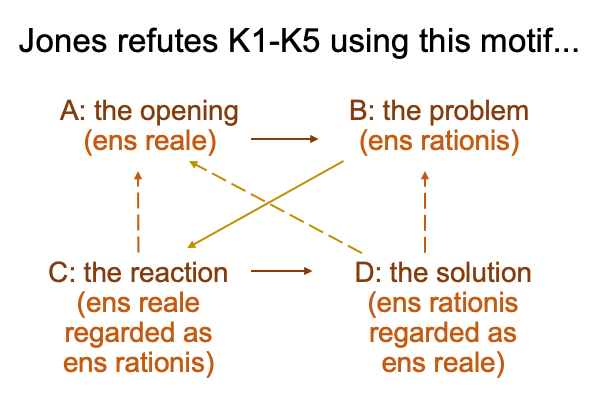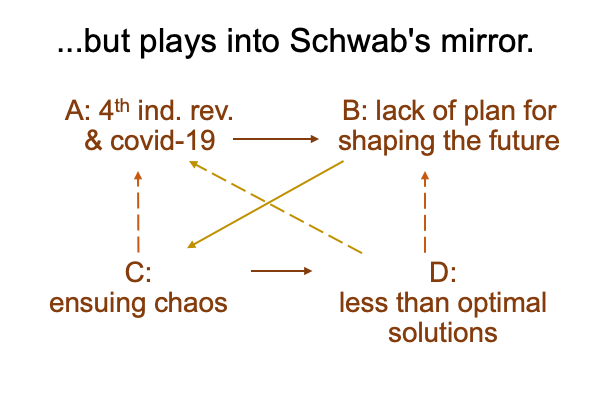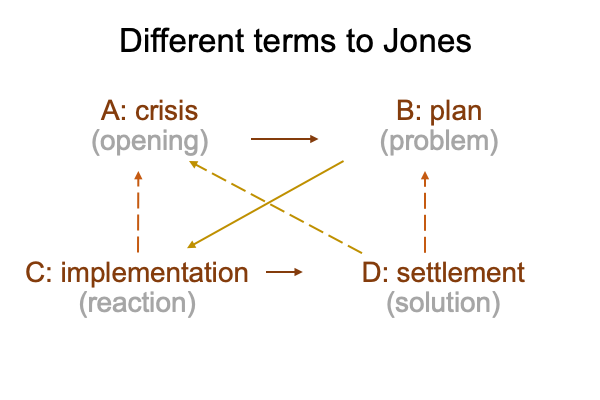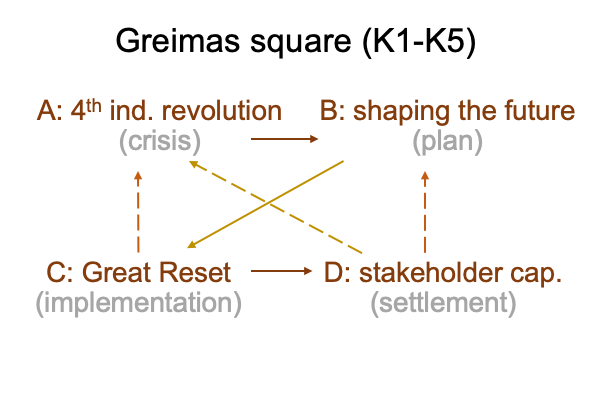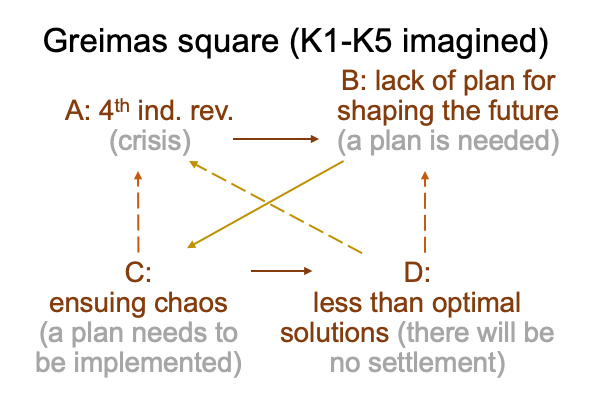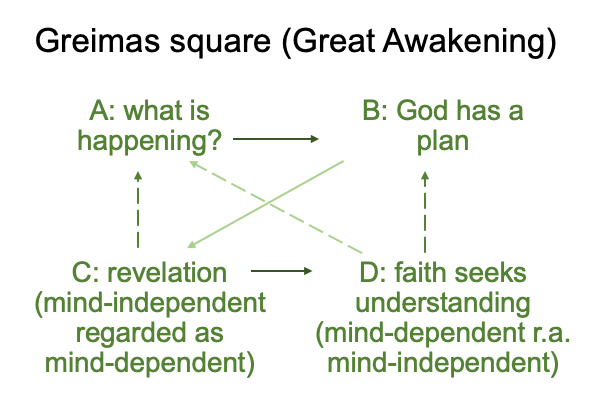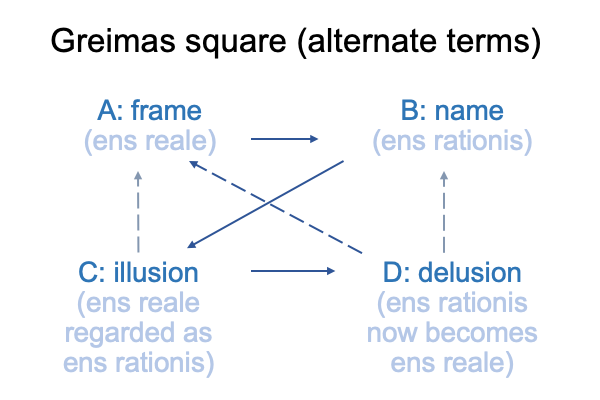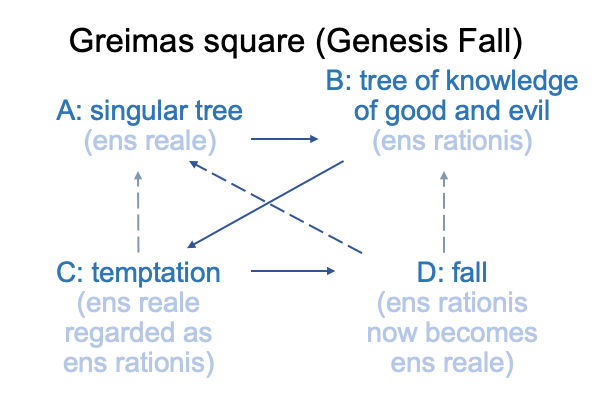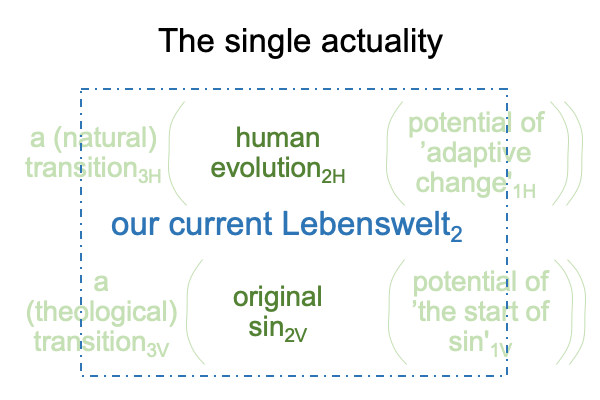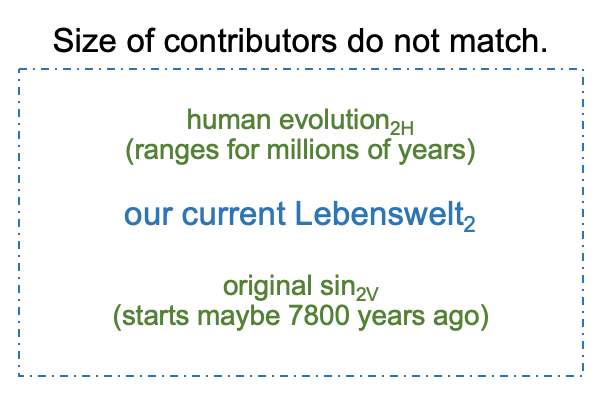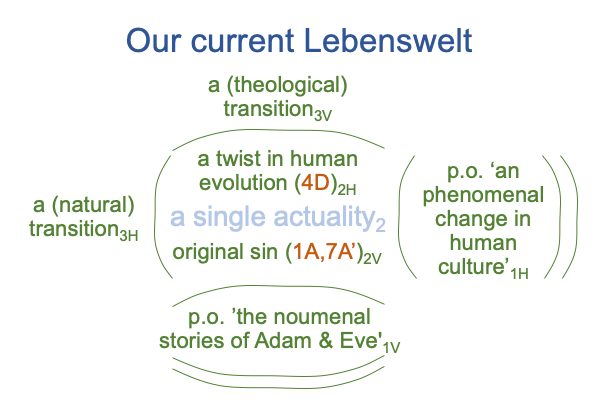0049 What do contemporary scholars say about the emblematic trees?
The tree of the knowledge of good and evil raises the question of human wisdom and discernment.
The tree of life raises the question of human immortality, or lack thereof.
0050 Perhaps, there are other lessons as well.
If the stories of Adam and Eve are fairy tales about the one-way increase in social complexity that characterizes the Ubaid of southern Mesopotamia, made possible by the realization of speech-alone talk, then the women of Seth may be onto something.
Speech-alone talk projects meanings, presences and messages into spoken words. Then, culture constructs artifacts that validate those projections. Surely, the nameless and feminine authors of the Genesis fairy tale do the same with the fabled trees. The trees are artifacts that validate their projections. This is a condition2H.
0051 Speech-alone talk exists as two arbitrarily related systems of differences.
The key term is “differences”.
So, what is the tree of life different than?
Obviously, the tree of death.
What is the tree of the knowledge of good and evil different than?
The tree of the lack of such knowledge? The tree of innocence?
0052 Why are the trees of death and innocence not mentioned?
They are projected as shadows onto the trees that are mentioned.
Eat of the fruit of the tree of knowledge of good and evil and you will surely die.
Eat of the fruit of the tree of innocence and you will surely live.
0053 God’s command to Adam is sound advice.
But, it is the other advice that God does not speak, because He knows the truth.
0054 Speech-alone talk fosters unconstrained social complexity. The adoption of speech-alone talk is a one-way street.
Today, no one wants the internet to go off, despite its dangers. Two generations ago, nobody wants the electricity to fail. A hundred years before that, railroads and steamships are necessities. These types of statements go back to the start of the Ubaid, where people learn to trade before the temple. Technical and social innovations produce more wealth and more power. Consequently, speech-alone talk spreads from the Ubaid to surrounding hand-speech talking cultures. It flies on wings of mimicry. Today, as with the Ubaid, all civilizations practice speech-alone talk.
0055 So, what is the truth?
There is no return to the innocence and the life of the Lebenswelt that we evolved in. The portal is closed.
The women of Seth acknowledge this. They see people gaining knowledge all around them, as novel specialties arise, flourish, then are replaced by further innovations. They see new insights gain fashion, order society, then go berserk. They see people leaving small villages and migrating to larger ones, if only for their own protection. The old ways no longer offer security.
0056 The women of Seth somehow grasp the Ubaid in their fairy tales. God is correct. Once the fruit of the tree of the knowledge of good and evil is consumed, we can become like the gods, because we may devise ways to live forever and to be all controlling. Self-anointed human gods may be aided by the tree of life, pruned into the tree of the innocence of others.
But, more worrisome, the tree of life offers an escape from the dreary technicalities and the nightmarish machinations of speech-alone talk and all that it actualizes. Adam and Eve are expelled from the garden in order to prevent an attempt to escape their divine fate, inspired by a delusion that we can return to the Lebenswelt that we evolved in.
0057 The women of Seth see the madness, through the passing generations. First, the crowds ridicule and kill the shamans of old. Who needs the timeless ways? Then, generations later, the crowds gather like sheep in the hope of a revival of a shaman of old. Then, a pretender guides them, as they move and become one with the animals. Then, a flaming sword, swerving in all directions, drives them to annihilate one another, along with everything that seems to prevent their return to bliss. This is an insight2V.
There is no return to the Lebenswelt that we evolved in. We cannot eat from the tree of innocence, ever again.
